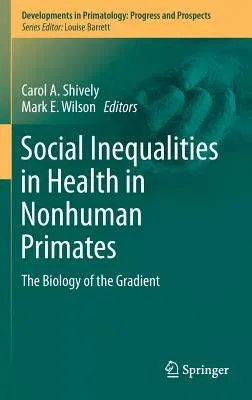Social Inequalities in Health in Nonhuman Primates: The Biology of the Gradient (2016)Hardcover - 2016, 29 April 2016

Qty
1
Turbo
Ships in 2 - 3 days
In Stock
Free Delivery
Cash on Delivery
15 Days
Free Returns
Secure Checkout

Part of Series
Developments in Primatology: Progress and Prospects
Print Length
178 pages
Language
English
Publisher
Springer
Date Published
29 Apr 2016
ISBN-10
331930870X
ISBN-13
9783319308708
Description
Product Details
Book Edition:
2016
Book Format:
Hardcover
Country of Origin:
NL
Date Published:
29 April 2016
Dimensions:
23.39 x
15.6 x
1.27 cm
ISBN-10:
331930870X
ISBN-13:
9783319308708
Language:
English
Location:
Cham
Pages:
178
Publisher:
Weight:
439.98 gm